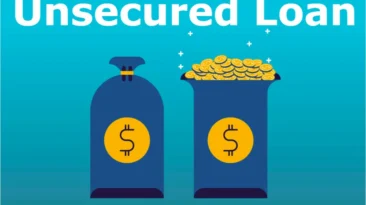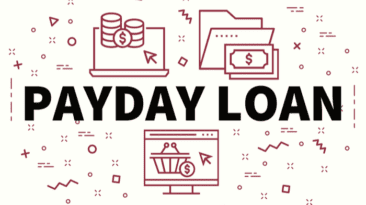When unexpected expenses arise or you’re planning a major purchase, a personal loan can be a lifeline to help you bridge the financial gap. Personal loans are versatile and can be used for various purposes, such as debt consolidation, home improvements, or funding a dream vacation.
In this article, we will delve into the world of personal loans, discussing what they are, how they work, and essential tips to consider before applying. Let’s embark on this financial journey together and gain the experience, expertise, authority, and trust to make informed decisions about personal loans.
Personal Loan Explained
A personal loan is a type of unsecured loan, meaning you don’t need to provide collateral to borrow money. Lenders evaluate your creditworthiness based on your credit score, income, and other financial factors. With a fixed interest rate and a predetermined repayment period, personal loans offer predictability and structured repayment plans. They provide borrowers with a lump sum of money, which is then paid back in regular installments over time.
Understanding the Types of Personal Loans
There are various types of personal loans tailored to specific needs:
1. Debt Consolidation Loans
Description: Combining multiple debts into one loan to simplify payments and potentially secure a lower interest rate.
Debt consolidation loans are an excellent option for individuals juggling multiple debts with varying interest rates. By consolidating these debts into a single loan, borrowers can streamline their finances and potentially save money on interest payments.
2. Secured Personal Loans
Description: Loans backed by collateral, often lead to more favorable terms for borrowers with lower credit scores.
Secured personal loans require borrowers to pledge assets, such as a car or a savings account, as collateral. This reduces the risk for lenders, making them more willing to offer lower interest rates and larger loan amounts.
3. Unsecured Personal Loans
Description: Loans without collateral, relying heavily on the borrower’s creditworthiness to determine eligibility and terms.
Unsecured personal loans are widely available but typically come with higher interest rates compared to secured loans. They are a popular choice for borrowers who don’t want to risk losing assets or don’t have valuable assets to use as collateral.
4. Line of Credit Loans
Description: Similar to a credit card, where borrowers can withdraw funds up to a predetermined credit limit as needed.
A line of credit allows borrowers to access funds on demand, making it suitable for ongoing projects or expenses. Borrowers only pay interest on the amount they withdraw, offering more flexibility than traditional loans.
5. Co-Signed Loans
Description: Loans with a co-signer who shares responsibility for repayment and provides additional assurance to the lender.
Co-signed loans are an option for borrowers with limited credit history or lower credit scores. A co-signer with a stronger credit profile can increase the chances of loan approval and secure better terms.
The Benefits of Personal Loans
Personal loans offer several advantages that make them an attractive financial tool for many individuals:
1. Flexibility in Usage
Description: Borrowers can use personal loan funds for various purposes, including debt consolidation, medical expenses, and home improvements.
Unlike some loans that are specific to certain uses (e.g., auto loans or mortgages), personal loans provide borrowers with the freedom to use the funds as they see fit, within reason.
2. No Collateral Required
Description: Personal loans are unsecured, eliminating the need for borrowers to put up assets as collateral.
For individuals without valuable assets or those who prefer not to risk their belongings, personal loans offer a viable borrowing option without requiring collateral.
3. Fixed Interest Rates
Description: Personal loans typically come with fixed interest rates, providing predictability in monthly payments.
Fixed interest rates ensure that borrowers know precisely how much they need to repay each month, simplifying budgeting and financial planning.
4. Structured Repayment Plans
Description: Borrowers repay personal loans in equal installments over a predetermined period, making it easier to manage finances.
With structured repayment plans, borrowers can create a clear timeline for paying off the loan, ensuring they stay on track to becoming debt-free.
5. Quick Access to Funds
Description: The application process for personal loans is relatively fast, providing borrowers with timely access to funds.
In urgent situations or when opportunities arise, personal loans can offer a swift financial solution, helping borrowers address their needs promptly.
Finding the Right Personal Loan
Choosing the right personal loan is crucial to ensuring you receive favorable terms and a seamless borrowing experience. Here are essential steps to consider when searching for the perfect loan:
1. Assess Your Financial Situation
Before applying for a personal loan, take a close look at your financial situation. Evaluate your income, expenses, and existing debts. Understanding your financial standing will help you determine how much you can afford to borrow and repay comfortably.
2. Check Your Credit Score
Your credit score plays a significant role in the loan application process. Lenders use it to assess your creditworthiness and determine the interest rate you qualify for. Obtain a copy of your credit report and review it for accuracy, as errors could affect your eligibility for favorable loan terms.
3. Compare Lenders and Interest Rates
Don’t settle for the first lender you come across. Shop around and compare offers from various financial institutions. Look for lenders that offer competitive interest rates, favorable repayment terms, and excellent customer service.
4. Read the Fine Print
Carefully read all the terms and conditions of the loan before signing any agreements. Pay attention to interest rates, repayment periods, fees, and any potential penalties for early repayment. Being well-informed will prevent unpleasant surprises down the road.
5. Consider Online Lenders
Online lenders have become increasingly popular due to their convenience and competitive rates. Explore reputable online lending platforms that offer personal loans to expand your options and find a lender that best suits your needs.
6. Pre-Qualify for Loans
Many lenders offer pre-qualification processes that provide estimated loan offers without impacting your credit score. Use this feature to gauge your eligibility and compare offers from multiple lenders.
7. Watch Out for Scams
Be cautious of scams and fraudulent loan offers, especially if you have bad credit or are in a desperate financial situation. Avoid lenders who guarantee approval without any credit check or ask for upfront fees.
8. Consider Alternative Credit Sources
If you have difficulty obtaining a traditional personal loan, consider alternative credit sources, such as credit unions or peer-to-peer lending platforms. These options may offer more lenient eligibility criteria or better terms.
9. Seek Professional Financial Advice
If you’re unsure about the borrowing process or need guidance on your financial situation, seek advice from a certified financial advisor. Their expertise can help you make the best decision for your specific needs.
Frequently Asked Questions (FAQs)
Here are some common questions about personal loans, along with concise answers to help you understand better:
1. What Exactly Is a Personal Loan?
A personal loan is an unsecured loan that provides borrowers with a lump sum of money to use for various purposes, such as debt consolidation, home improvements, or emergencies.
2. How Do Personal Loans Work?
Personal loans work by providing borrowers with a fixed amount of money, which they repay in equal installments over a predetermined period, typically with a fixed interest rate.
3. Are Personal Loans Only for Specific Purposes?
No, personal loans are versatile and can be used for various purposes, including debt consolidation, medical expenses, home repairs, or funding a wedding.
4. How Is My Eligibility for a Personal Loan Determined?
Lenders evaluate your creditworthiness based on factors like your credit score, income, employment history, and existing debts. These factors help determine whether you qualify for a loan and what terms you receive.
5. Can I Get a Personal Loan with Bad Credit?
Yes, some lenders offer personal loans to individuals with bad credit. However, these loans may come with higher interest rates and less favorable terms.
6. What’s the Difference Between Secured and Unsecured Personal Loans?
Secured personal loans require collateral, such as a car or savings account, while unsecured personal loans do not require any assets as security.
Conclusion: Empowering Borrowing Decisions
Personal loans can be powerful financial tools when used responsibly and with careful consideration. Understanding the various types of personal loans, their benefits, and the steps to find the right one is essential to make informed borrowing decisions.
As you embark on your borrowing journey, remember to assess your financial situation, review your credit score, and compare offers from multiple lenders. Avoid scams and seek professional advice if needed. By following these guidelines, you can confidently choose a personal loan that aligns with your needs and helps you achieve your financial goals.





Add comment